Advances in Internet of Things
Vol.1 No.2(2011), Article ID:6303,6 pages DOI:10.4236/ait.2011.12005
WiFi/WiMAX Seamless Convergence with Adaptive Vertical Handover for Continuity of Internet Access
1Engineering Faculty, Electerical and Computer Engineering Department, IIUM, Kuala Lumpur, Malaysia
2Wireless Networks and Protocol Research Laboratory, MIMOS Berhad, Technology Park Malaysia, Kuala Lumpur, Malaysia
3Engineering Faculty, Computer and Communication System Engineering Department, UPM, Kuala Lumpur, Malaysia
E-mail: Rashid@iium.edu.my
Received March 1, 2011; revised March 28, 2011; accepted April 5, 2011
Keywords: WiFi, WiMAX, Convergence, Heterogeneous Network, Seamless Handover
Abstract
The next generation of the wireless networks will consist of several overlapping tiers. Provision of undisrupted communication to mobile users is a challenging task. Handover delay is one of the problematic issues that users are faced in the heterogeneous networks. However, in the case of both the WiMAX and the WiFi technologies which are located at the same base station (BS), the vertical handover (VHO) delay will be less as compared with the two conventional WiMAX/WiFi heterogeneous networks with two different wireless Internet service providers (WISP). Nevertheless, protocol conversion is still adding delay and jitter for data exchange between the needed two technologies. In this paper, in order to reduce the delay in the protocol conversion, a new industrial design for WiWi (WiMAX and WiFi) adaptation layer is proposed. The realization of the interworking between these two standards is discussed and evaluated. The results show that the proposed scheme-with the scenario under studyhas better performance than other related works.
1. Introduction
y distributing a high-speed Internet access from cable, Digital Subscriber Line (DSL), and other fixed broadband connections within the wireless hotspots, WiFi has dramatically increased productivity and convenience. Today, there are nearly pervasive WiFi that delivers the high-speed Wireless Local Area Network (WLAN) connectivity to millions of offices, homes, and public locations, such as hotels, cafés, and airports. The integration of WiFi into notebooks, handhelds and Consumer Electronics (CE) devices has accelerated the adoption of WiFi to the point where it is nearly a default feature in these devices [1].
On the other hand, the WiMAX takes wireless Internet access to the next level, and over time, could achieve similar rates to devices as WiFi. WiMAX can deliver Internet access miles from the nearest WiFi hotspot and blanket large areas called wide area networks (WANs), be they metropolitan, suburban, or rural with multimegabit per second mobile broadband Internet access [2]. Although the wide area Internet connectivity offered by 2.5 and 3G cellular data services are mobile, these services do not provide the broadband speeds to which users have become accustomed whereas WiMAX can deliver these services. In the last few years, WiMAX has established its relevance as an alternative to wired DSL and cable, providing a competitive broadband service that can be rapidly and cost effectively deployed.
Together, the WiMAX and the WiFi are ideal partners for service providers to deliver convenient and affordable mobile broadband Internet services in more places. Both are open IEEE wireless standards built from the ground up for Internet Protocol (IP)-based applications and services. IEEE 802.11 has accelerated the network deployment for providing high transmission rate in limited geographical coverage, while IEEE 802.16 offers more flexibility while maintaining the technology data rate and transmission range [3]. The limited coverage range of WiFi makes it difficult to meet the future ubiquitous networks need while IEEE 802.16 can provide the high speed Internet access in a wide area. A natural trend is the combination of the IEEE 802.16 and the IEEE 802.11 to create a complete wireless solution for delivering high speed Internet access to businesses, homes and hotspots.
However, both techniques have their own sets of advantages and disadvantages. On the one hand, WiFi may offer a high data rate (up to 500 Mb/s is envisaged), but its power is limited due to the use of unlicensed band and are therefore much more confined in coverage, while on the other hand, even though WiMAX is data rate limited (up to 70 Mb/s fixed), it can provide extensive coverage much like the cellular systems [4].
Among the differences between the WiFi and the WiMAX networks are the Media Access Control (MAC) and the spectrum determines the mechanisms of channel assignment. The allocated spectrum for the WiFi system is completely operated in the license-exempt (unlicensed) band, while most WiMAX systems use the licensed band. As a result, WiMAX and WiFi have different MAC designs [5]. The MAC in WiFi is the contention-based CSMA/CA, while the MAC defined in WiMAX is contention-free. WiMAX BSs schedule time slots to subscriber stations (SSs) (i.e., in the time domain). In addition, with Orthogonal Frequency Division Multiple Access (OFDMA) physical layer (PHY), BSs can allocate a subset of subcarriers to each SS (i.e., in the frequency domain).
This paper explores the complementary nature of WiMAX and WiFi, as well as illustrates how service providers can leverage these technologies to offer wireless broadband Internet connectivity and compelling new services at affordable prices and in more locations. The paper proposes a new industrial design for WiWi (WiMAX/WiFi) adaptation layer to reduce the delay in the protocol conversion. The realization of the inter-working between these two standards is discussed and evaluated. The results are compared with the other conventional methods from the other related works.
2. Related Works
Several technologies have been developed for handover purposes, for example, media independent handover 802.21 MIH [6] is an emerging IEEE standard that enables handover and interoperability between the heterogeneous network types including both 802 and non 802 networks which allow handover between the cellular and the 802 based technologies, i.e., 802.11, 802.15 and 802.16 networks. Unlicensed Mobile Access (UMA) based on IMS (IP multimedia subsystem) is ETSI 3GPP standard which provides vertical handover and interworking to extend mobile voice, data and Multimedia applications over the IP networks [7].
However these standards are designed for separate entities, i.e., gateway or server works as inter-working device between the two networks which can be owned and controlled by the operator. The needs for lightweight handover module that can work on the mobile or small access point open the door for many research proposals. In [8] the Fixed-Mobile Convergence (FMC) was studied, where the complete portability of the wireless and the wired services and applications over the networks using the portable devices is achieved by both the NGNs and the P2P, with the consideration of Mobile IP (MIP) and media independent handover (MIH) support. Chung et al. [9] proposed VoIP Multiplex-Multicast (M-M) scheme to double the capacity in WiMAX infrastructure to IEEE 802.11. Authors were shown that the voice capacity of a WLAN connected to WMAN is severely limited by the WLAN. The experimental results have confirmed that the M-M scheme sufficiently improved delay, capacity and coverage of VoIP over a Wireless Distribution System (WDS).
A new method is proposed in [10] to allow 802.16 MCF (mesh coordination function) to be used for TDMA data transmissions in 802.11a mesh networks. The method works by embedding the 802.16 packets into the 802.11a broadcast packets with padding so that all transmissions can be aligned on the 802.16 frame boundaries. The simulation results show that the method significantly decreases the overhead inherent in RTS-CTS-ACK exchanges. In [11], a new “WLAN to WLAN/WiMAX” handoff scenario was introduced, where a dynamic WLAN/WiMAX network selection scheme was proposed to maximize the delivered information bits. The numerical results showed that the numbers of delivered bits are improved by 10% as compared to the traditional schemes.
The two handoff management schemes between the IEEE 802.11g and the IEEE 802.16e are presented in [12]. Some network information such as bandwidth, blocking probability, dropping probability, and different types of traffics are considered as performance metrices. The handoff results are done for dual-mode and multiinterfaced devices.
In [13], a bandwidth based adaptive fuzzy logic handoff is proposed in the IEEE802.16 and the IEEE802.11 hybrid networks. This handover algorithm can adapt itself with the dynamic conditions of the hybrid networks based on the mobility speed and traffic of WLAN stations. However, since this algorithm is based on the WLAN stations speed, it thus seems that it will not work in many scenarios where the WLAN stations are nomadic or fixed. An adaptive policy-based vertical handoff algorithm is discussed in [14]. The paper proposes the vertical handover based on the velocity and the averaged received signal strength (RSS) estimation algorithms. However, the paper assumes a higher RSS estimated power which means a higher throughput which is not the case in many scenarios as will be discussed it later.
An inter-working architecture of wireless mesh backbone and vertical handoff scheme between the 802.11 and the 802.16 is presented in [15]. The handoff signaling procedure in different scenarios has been discussed with the aim to reduce the signaling overhead on the backbone and to provide a lower handoff delay based on the call admission control (CAC). However, the proposed vertical handover is performed in two stages on both the MAC and the IP layers so as to avoid delay due to the upper layers message exchanges. In [16] the vertical handoff translation gateway architecture is proposed in order to improve the transmission QoS guarantees. The paper proposed the vertical handover scheme by encapsulating the WiFi transmitted packets with the WiMAX frames in the uplink and vice versa in the downlink.
3. System Model and Scenario Setup
In this section we discuss the interworking module that has been proposed to be built in the laptop/mobile for ubiquitous connection with high data rates. The new module is a combination of the WiMAX and the WiFi protocol stack. The WiWi module comprises WiMAX and WiFi layers located at the mobile WiMAX which will work as a relay node (here we call it mobile relay node). The purpose of the WiWi module is to convert the WiMAX signal received from the WiMAX network (i.e., BS) to the WiFi device (here we call it Laptop). Figure 1 shows the protocol stack of the proposed WiWi module. The scope of WiWi module is to increase the laptop range when the user moves out of the WiFi coverage by joining WiMAX network using the WiWi module installed in the WiMAX mobile, as shown in Figure 2. The scope of this paper is to discuss adaptive handover decision for selecting either the WiFi or the WiMAX network.
Figure 2 shows the two possible scenarios for our study. (a) The Laptop within WiWi and WiFi networks coverage and (b) The Laptop out of WiFi network coverage. Scenario (b) is straightforward in which the laptop will see only one network connection provided by the WiWi module. The device will directly start the network

Figure 1. The interaction of WiWi protocol Stack with the WiMAX BS and WiFi device.

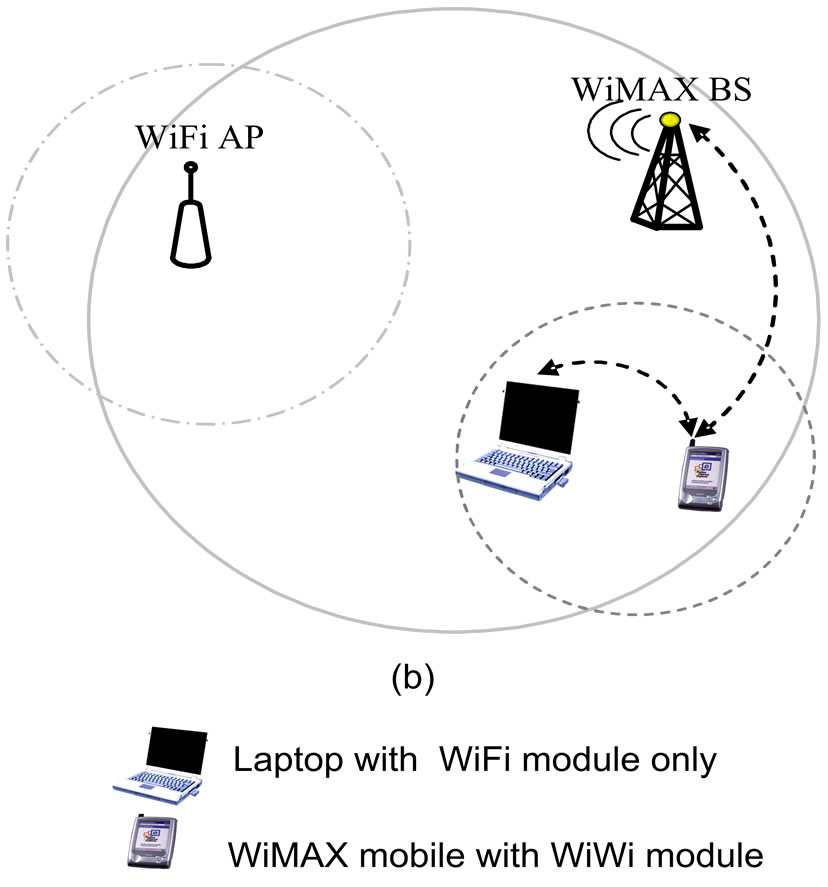
Figure 2. WiMAX and WiFi coverage in indoor and outdoor (a) the laptop in the WiFi coverage (b) laptop is out of WiFi coverage.
entry process to join the WiMAX network using the WiWi module installed at the WiMAX mobile. There are two modes for the WiWi operation open access mode from which the user opens for everyone to access his/her WiMAX mobile (WiWi module), while in the close mode the WiFi device will only allow access to the WiMAX mobile to get the Internet access.
On the other hand, in scenario Figure 1 there are two networks available, i.e., the WiMAX (using WiWi module) and the WiFi network from which the device will select only one of them to access the Internet based on the received signal strength indicator (RSSI) message received from the AP/BS. In this scenario using the conventional handover for the network selection based on the RSSI message is problematical [17]. This is because the WiFi device will sense two WiFi signals coming from the WiWi Module and the WiFi access point (AP). The difference between this scenario and the conventional scenario is that the decision criteria are not the same due to the difference in the technology in which the WiWi is a hybrid of the relay between the WiMAX and the WiFi as compared to the pure WiFi).
The RSSI value alone is not sufficient to be the decision criteria for the handover, for example, in the closed mode the RSSI from the WiWi signal is usually greater than that of the AP (WiFi network) signal. Since the laptop is close to the WiMAX mobile (owned by the same owner), the result will be to select the WiWi network. This is shown in Figure 3. Selecting the WiWi network is not always correct. Usually, the throughput of the WiWi network is lower than the WiFi throughput, due to the degradation results from the multihop (relay) in the WiWi network [14]. Consequently, it is not reasonable to initiate handover early if based on the conventional handover procedure. In this paper we propose a new algorithm for the network selection based not only on the RSSI but also on the total throughput. This is discussed in the next section.
4. Network Selection Scheme
Figure 4 shows the handover decision based on the RSSI and the throughput. The total throughput  for the WiWi network is calculated based on the WiMAX throughput
for the WiWi network is calculated based on the WiMAX throughput  and the effect of the vertical handover within the WiWi module:
and the effect of the vertical handover within the WiWi module:
 (1)
(1)
where  is the degradation of throughput due to the multihop relay [15].
is the degradation of throughput due to the multihop relay [15].  is the WiMAX capacity and
is the WiMAX capacity and  is the number of hops (i.e. in WiWi,
is the number of hops (i.e. in WiWi, ).
).  is the total throughput loss due to the protocol converter, where
is the total throughput loss due to the protocol converter, where  is the network selection time and l is the mean frame size. Figure 5 shows the flow of the messages for connecting the WiFi devices with the WiWi network. Here we assume that the WiWi is in the closed mode so that there are no other nodes sharing the channel with the WiFi device. The
is the network selection time and l is the mean frame size. Figure 5 shows the flow of the messages for connecting the WiFi devices with the WiWi network. Here we assume that the WiWi is in the closed mode so that there are no other nodes sharing the channel with the WiFi device. The  throughput depends on the WiMAX channel bandwidth (i.e. 1.25 - 20 MHz) and the total number of tones (256 for fixed and 1024 for mobile) and the channel quality [16].
throughput depends on the WiMAX channel bandwidth (i.e. 1.25 - 20 MHz) and the total number of tones (256 for fixed and 1024 for mobile) and the channel quality [16].
5. Simulation Results
A computer simulation is conducted for the network scenario in Figures 2 using the network simulation ns 2.34. A new software package is implemented to ns2 by using the scheme presented in Figures 3, 4 and 5. Other ns2 parameters setup is directly taken from [18] and [19]. From the related works, we found that mostly the two works are related to our work which are [15] and [16]. Both papers developed the schemes for the seamless vertical handover between the 802.16 and the 802.11. [15] The handover algorithm is implemented in the wireless mesh router where three air interfaces are built in the WMR, i.e., the 802.16 PMP, the 802.16 mesh, and the 802.11 access points with routing function for traffic coordination between the three air interfaces. In this section we compare our work with these two works in terms of time delay vs. packet size.
Figure 6 shows the time delay of the WiMAX and the WiFi vertical handover schemes which show the delay time for the proposed method that outperforms the other two related works. The gateway delay in [16] has a higher delay due to the packets queue from different nodes.
Figure 7 shows the overall throughput which degrades with the network selection time. However, the degradation is greater when using the ranging only (RSSI) than when the throughput is considered in the calculation. We need to take into consideration that the network selection

Figure 3. System model for jointly vertical handoff (WiFi to WiWi).
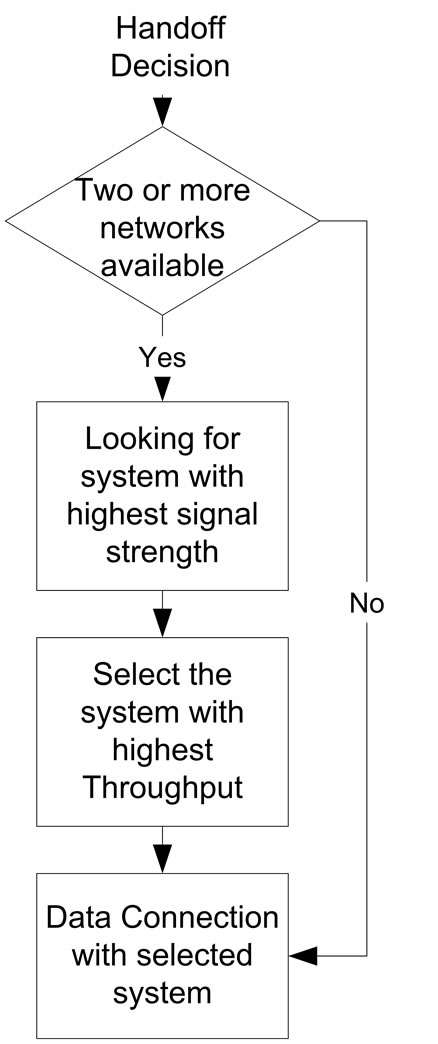
Figure 4. Proposed network selection scheme in the WiFi to WiMAX handoff scenario.
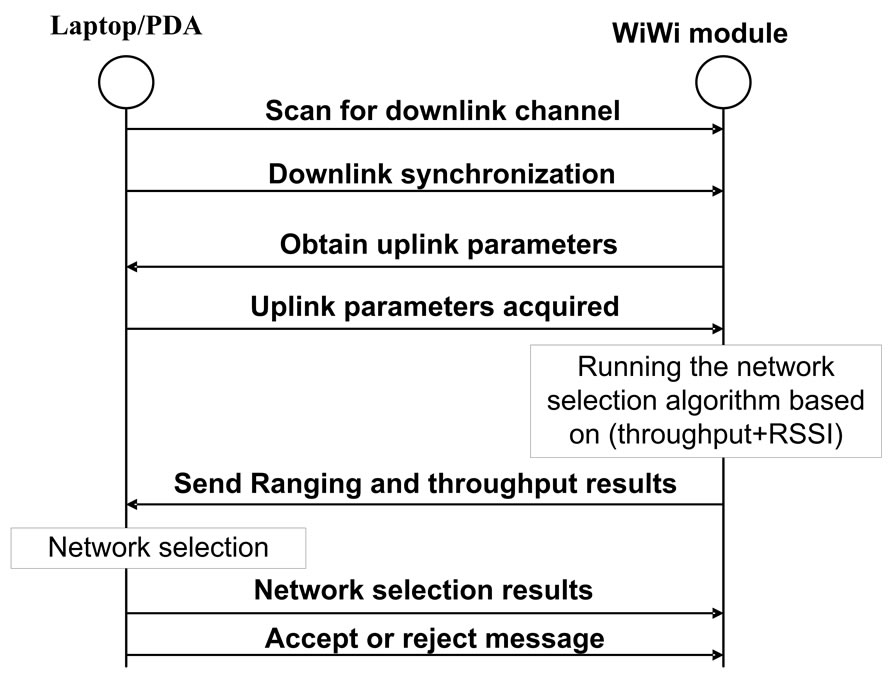
Figure 5. Proposed signaling process in the WLAN to WiMAX handoff scenario.
time is less when only using the RSSI than when using both the RSSI and the network throughput, thus for the handover from the WLAN to the WiWi is better when using the RSSI only. This is due to the fixed network (WiFi) throughput which is normally larger than the mobile network (WiWi) throughput. In the open mode, where the WiWi module is open for all, the signal from the WiMAX base station can travel for the multihop Figure 8 shows that the overall throughput is dramatically degraded with the number of hops which is due to the delay to propagate for each hop. This problem has been extensively discussed in the literature [12],
Figure 8 shows that the overall throughput is dramatically degraded with the number of hops which is due to the delay to propagate for each hop. This problem has been extensively discussed in the literature [12],

Figure 6. Vertical handover delay by using different protocols.
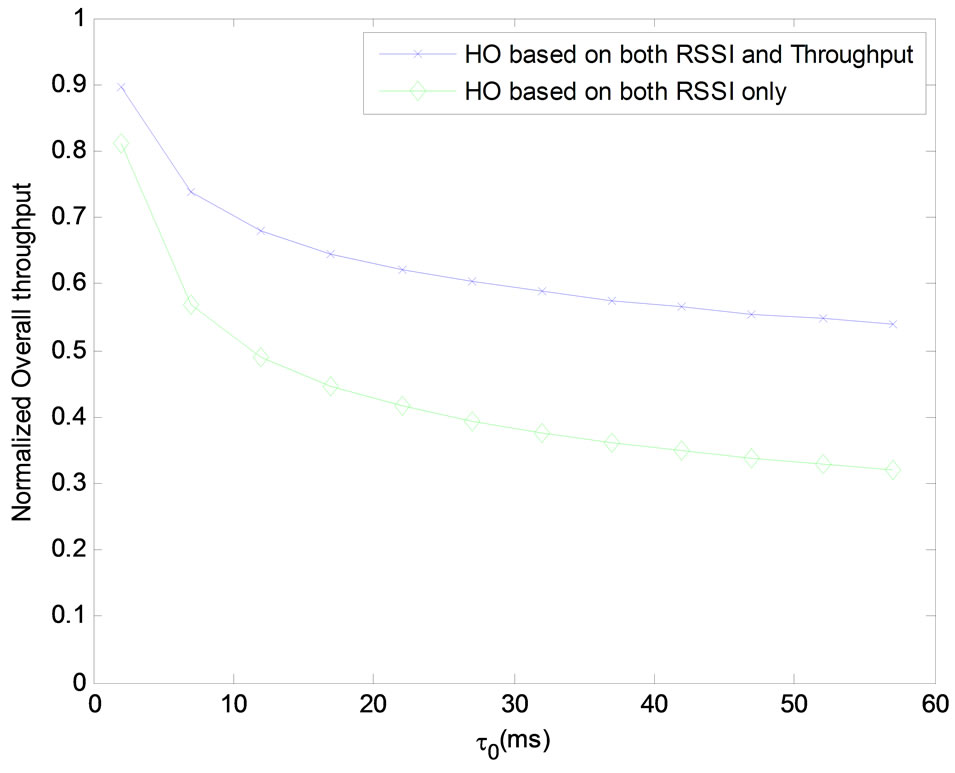
Figure 7. Normalized overall throughput for different type of network selections.
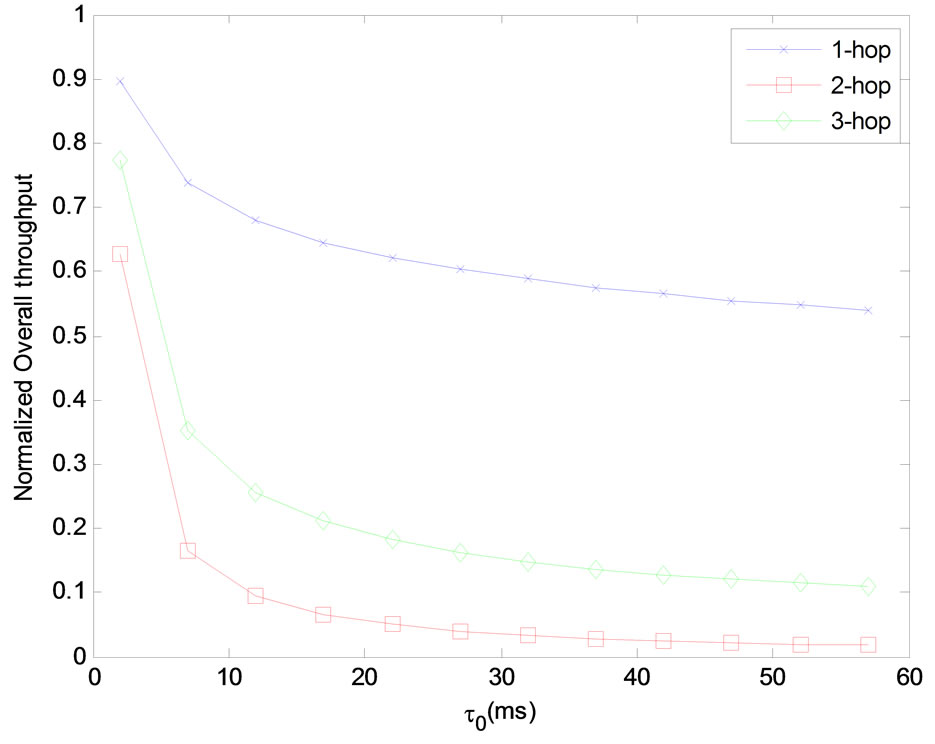
Figure 8. Normalized overall throughput for the open mode different number of hops.
[14]. Our proposed WiWi module is working at hop 1. The figure shows acceptable performance can be achieved at 1-hop. Multiple hops are out of the scope of this paper.
6. Conclusions
While e WiMAX is getting mature, the need for inter-working with other technologies is becoming crucial especially with the local area networking, i.e., the WiFi. This paper presents an industrial design for a new vertical handover algorithm for the WiFi/WiMAX vertical handover heterogeneous network. The proposed vertical handover is performed at the logical adaptation layer above the MAC layer. The results of the new algorithm shows less protocol converter time overhead which can guarantee thte QoS. The realization of the inter-working between these two standards is discussed and evaluated. Finally, ns2 results for the throughput and delay are given to show the performance of the vertical handoff implemented. The results are compared with the other conventional methods from the other related works.
7. References
[1] K. Pahlavan, P. Krishnamurthy, A. Hatami, M. Ylianttila, J. P. Makela, R. Pichna and J. Vallstron, “Handoff in Hybrid Mobile Data Networks,” Mobile and Wireless Communications Summit, Vol. 7, No. 2, April 2007, pp 34-47.
[2] J. Nie, J. C. Wen, Q. Dong, Z. Zhou, “A Seamless Handoff in IEEE 802.16a and IEEE 802.11n Hybrid Networks,” Communications, Circuits and Systems, 2005. Proceedings, 2005 International Conference on, Vol. 1, 27-30 May 2005, pp. 383-387.
[3] F. Behmann, “Impact of Wireless (Wi-Fi, WiMAX) on 3G and Next Generation: An Initial Assessment,” Electro Information Technology, 2005 IEEE International, Lincoln, 12 May 2005, pp. 1-6.
[4] R. Inayat, R. Aibara and K. Nishimura, “A Seamless Handoff for Dual-Interfaced Mobile Devices in Hybrid Wireless Access Networks,” Advanced Information Networking and Applications (AlNA2007), Vol. 1, 2007, pp. 373-378.
[5] O. S. Gaitan, P. Martins, S. Tohme and J. Demerjian, “SIP Embedded Attribute Certificates for Service Mobility in Heterogeneous Multi-Operator Wireless Networks,” Vehicular Technology Conference, (VTC2007), Dublin, 22-25 April 2007, pp. 2000-2004.
[6] G. Lampropoulos, K. Salkintzis and N. Passas, “Media-Independent Handover for Seamless Service Provision in Heterogeneous Networks,” IEEE Communications Magazine, Vol. 46, No. 1, 2008, pp. 64-71. doi:10.1109/MCOM.2008.4427232
[7] Y. Zhang, L. T. Yang and J. H. Ma, “Unlicensed Mobile Access Technology: Protocols, Architecture, Security Standards And Applications,” CRC Press, Boca Raton, 2008. doi:10.1201/9781420055382
[8] C. Tang, “Evolving to Wireless and Wireline Convergence—An Overview of IMS,” Wireless and Optical Communications, 2005 (WOCC2005), 22-23 April 2005, pp. 27-29.
[9] C. N. Ping, S. C. Liew and C. Lin, “Voice over Wireless LAN via IEEE 802.16 Wireless MAN and IEEE 802.11,” 2005 International Conference on Wireless Networks, Communications and Mobile Computing, Hong Kong, 13-16 June 2005, pp. 504-509. doi:10.1109/WIRLES.2005.1549460
[10] P. Djukic and S. Valaee, “802.16 MCF for 802.11a Based Mesh Networks: A Case for Standards Re-Use,” 23rd Biennial Symposium on Communications, Kingston, 29 May-1 June 2006, pp. 186-189.
[11] L.-C. Wang, A. Chen and H.-H. Chen, “Network Selection with Joint Vertical and Horizontal Handoff in Heterogeneous WLAN and Mobile WiMAX Systems”, Vehicular Technology Conference (VTC2007), Hsinchu, 22-25 April 2007, pp. 794-798.
[12] D. Niyato and E. Hossain, “Wireless Broadband Access: WiMAX and Beyond—Integration of WiMAX and WiFi: Optimal Pricing for Bandwidth Sharing,” IEEE Communications Magazine, Vol. 45, No. 5, May 2007, pp: 140-146. doi:10.1109/MCOM.2007.358861
[13] J. Nie, l. Y. Zeng and J. C. Wen, “A Bandwidth Based Adaptive Fuzzy Logic Handoff in IEEE 802.16 and IEEE 802.11 Hybrid Networks,” 2007 International Conference on Convergence Information Technology, Hyundai, 21-23 November 2007, pp. 24-29.
[14] S. N. Enrique and V. W. S. Wong, “Comparison between Vertical Handoff Decision Algorithms for Heterogeneous Wireless Networks,” 63rd IEEE Vehicular Technology Conference, Vol. 2, 2006, pp. 947-951. doi:10.1109/VETECS.2006.1682964
[15] Y. Q. Zhang, W. H. Zhuang and A. Saleh, “Vertical Handoff between 802.11 and 802.16 Wireless Access Networks,” Global Telecommunications Conference, Waterloo, 30 November-4 December 2008, pp. 1-6.
[16] Y.-C. Chen, J.-H. Hsiaa and Y.-J. Liaoa, “Advanced Seamless Vetical Handoff Architecture for Wimax and Wifi Heterogeneous Networks with Qos Guarantees,” Computer Communications, Vol. 32, No. 2, 2009, pp. 281-293. doi:10.1016/j.comcom.2008.10.014
[17] S. Xu and T. Saadawi, “Does the IEEE 802.11 MAC Protocol Work Well in Multihop Wireless Ad hoc Networks,” IEEE Communications Magazine, Vol. 39, No. 6, June 2001, pp. 130-137. doi:10.1109/35.925681
[18] S. Wiethölter and C. Hoene, “IEEE 802.11e EDCA Simulation Model for NS-2,” Telecommunication Networks Group, 2007. http://www.tkn.tu-berlin.de/research/802.11e_ns2/
[19] J. F. Borin, N. L. S.Fonseca, “A Standard-Compliant Scheduler for WiMAX Networks,” IEEE GLOBECOM Workshops, 30 November-4 December 2008, pp. 1-5.

